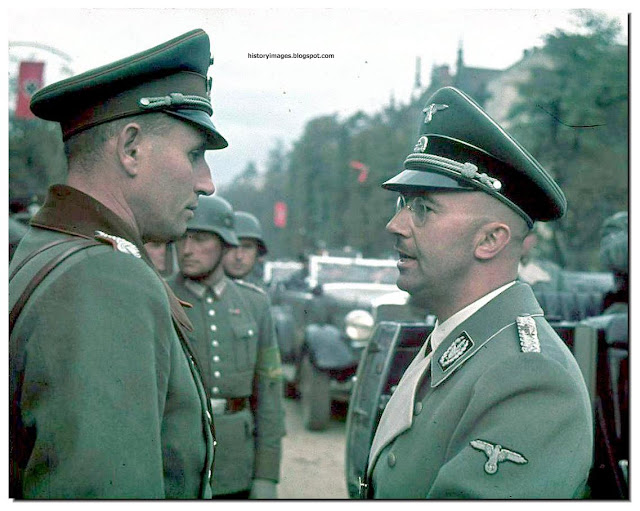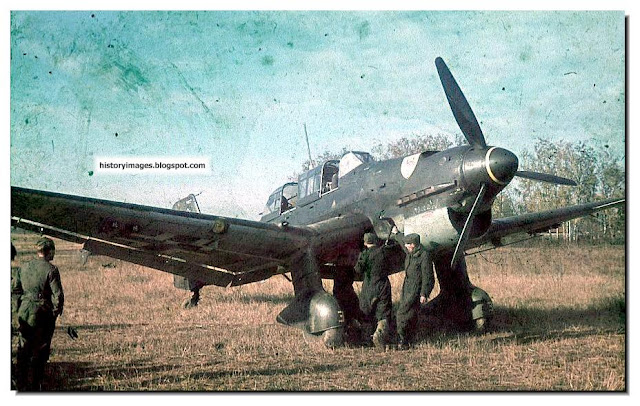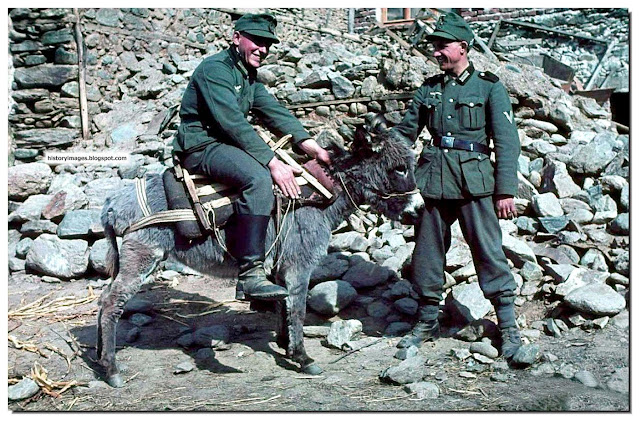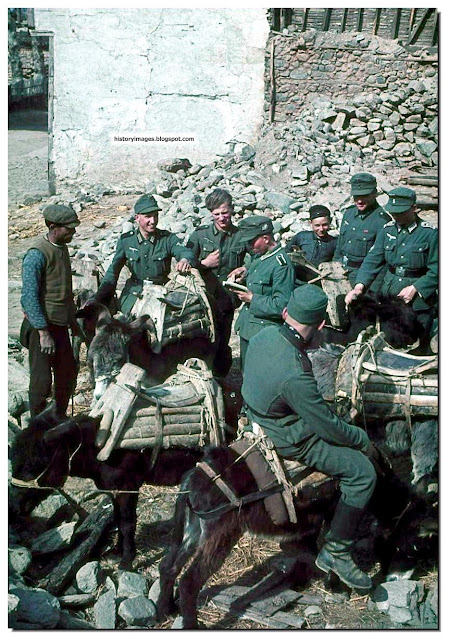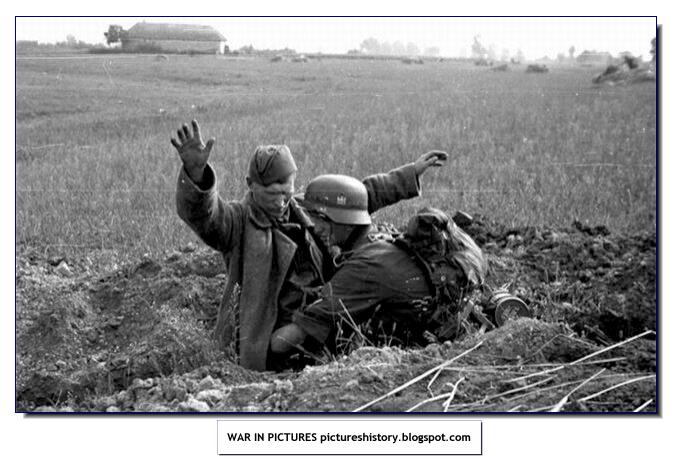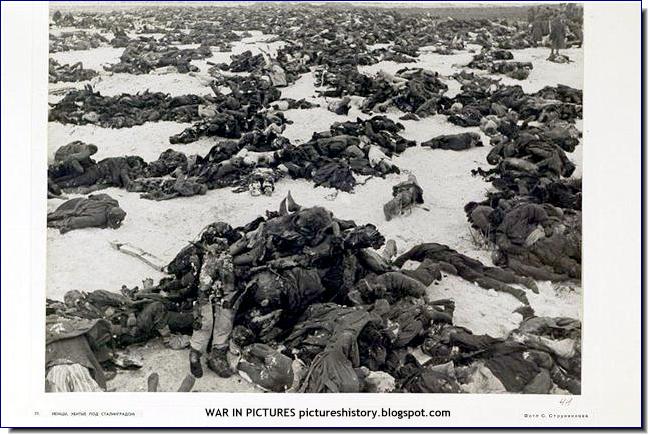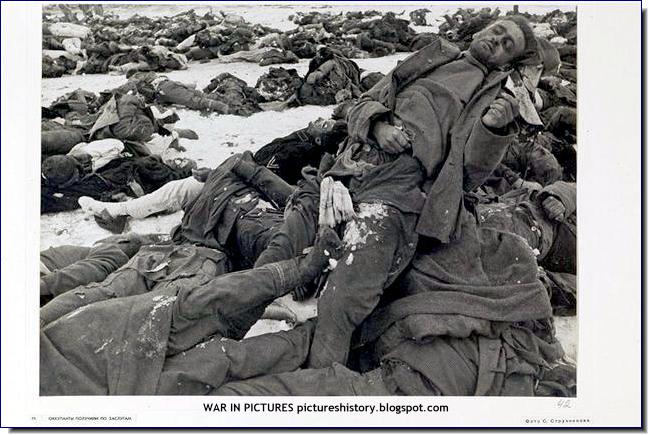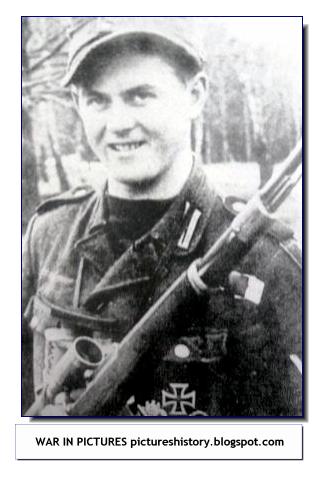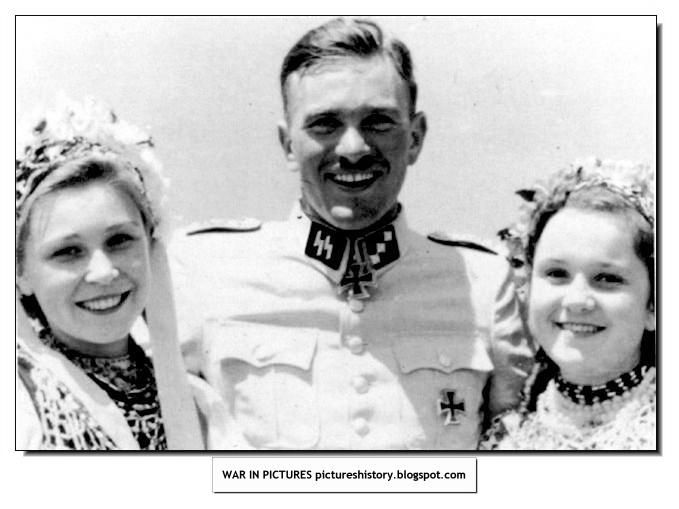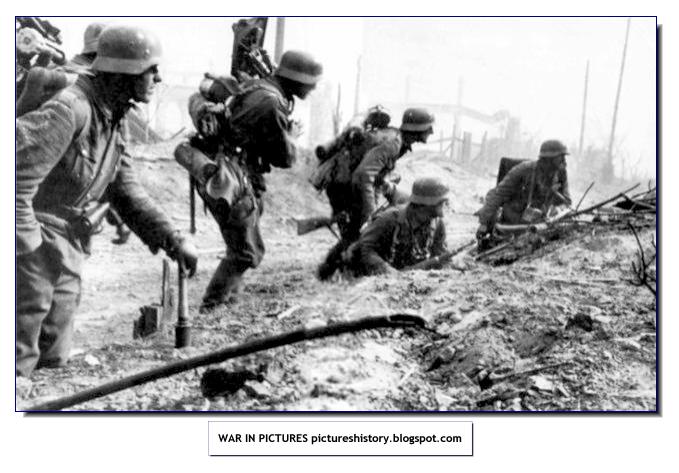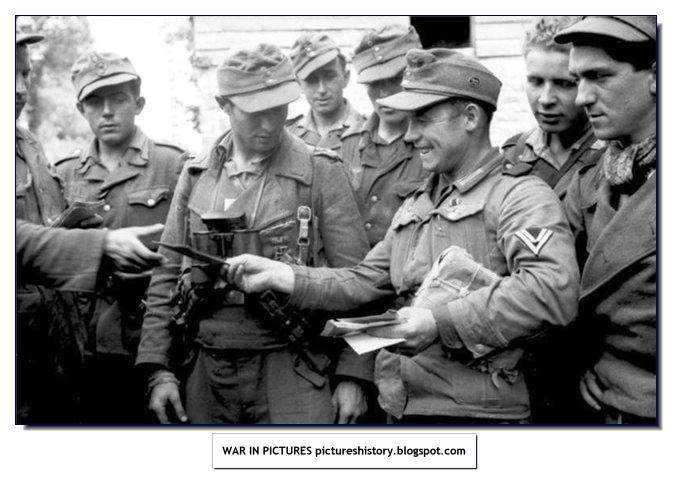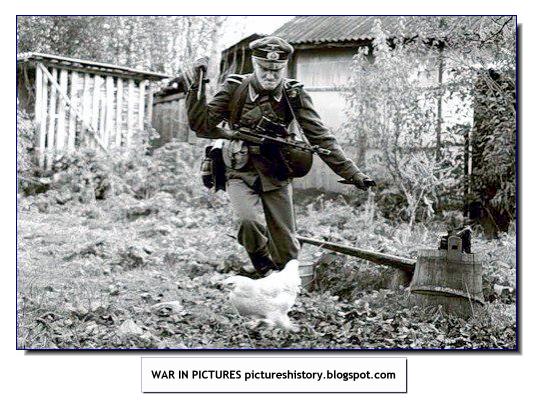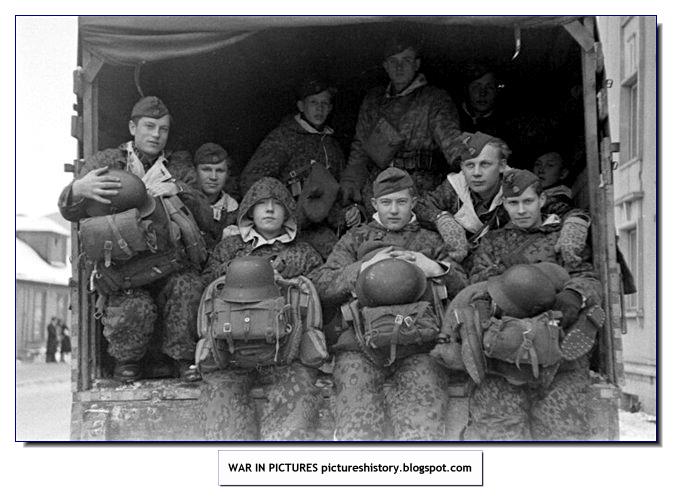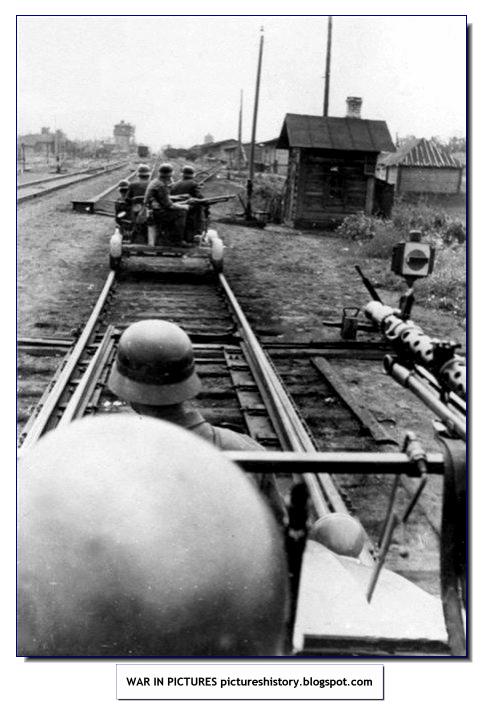(PLEASE CLICK ON THE IMAGES TO SEE THEM LARGER)
(Image: Hugo Jaeger)
Heinrich Himmler in Warsaw. 1939
German tanks in Russia
Germans with a Pak 35/36 gun on the street of a Russian city
Oberfeldfebel Rudolf Kruger (Rudolf Krüger), holder of the Knight's Cross He was awarded the Knight's Cross of October 5, 1941 while serving in the 6th company of the 32nd Infantry
Regiment.
(Image by George Silk)
An injured German soldier in captivity
(Image By Andre Zucca)
German soldiers march through a conquered Paris. June 1939
(Image By Hugo Jaeger)
German army on the move in Europe. 1940
Afrikakorps. German and Italian military vehicles in North Africa on the move
The tank belongs to the 22nd or 23rd Panzer Wehrmacht. The photo was taken in the Kalmyk steppes to the north of Stalingrad, in September 1942 (Source: Bundesarhiv (Bundesarchiv) / 169-0367, 169-0368).
A German paratrooper in full battle dress
(Source: Bundesarhiv (Bundesarchiv) / 169-0165, 169-0166, 169-0163.)
German soldiers socialise with Ukrainian women. Poltava. Ukraine. September 21, 1941
(Image: Hugo Jaeger)
Injured German soldiers recuperate in hospital
The Stuka Dive Bomber. JU 87.
When the German campaign in North Africa ended. German helmets.(Image: Eliot Elisofon)
(Image: Hugo Jaeger)
Berlin parade in 1939 to celebrate Hitler's fiftieth birthday
(Image: Hugo Jaeger)
Image of same parade
(Image: Hugo Jaeger)
German soldiers in Bulgaria. 1941
(Image: Hugo Jaeger)
Bulgaria. 1941
(Image: Hugo Jaeger)
Bulgaria. 1941
This guy is an officer from the Waffen SS Totenkopf Division
Russia. The Germans cross a stream
Crossing a wooden bridge
German soldiers firing a 37 mm Pak 35/36 anti-tank gun at Russian trucks. A town in Russia
Hitler would have frowned at this. A German war correspondent socialises with Russian women.
The initially dreaded German JU-87 (Stuka Dive Bomber)
A German observation post
German sea plane Arado 196 A 3 touches down
German soldier keep watch over a column of Russian POW. 1943.
1943. New Wehrmacht recruits being given their kit
German soldiers walk down the street of a German city
Morning toilet by Wehrmacht men at a railway station
North Africa. German soldiers fire the MG 34 machine gun
Hermann Goering takes salute from SS soldiers
German airmen prepare to fly the HE 111
Wounded soldiers being flown to Germany
These German soldiers rest by the road side
The two German generals have a conference
Spanish volunteers in the 25th Division of Wehrmacht. Formed in Madrid, 24.06.1941, on 20.10.1943 they were sent to the Eastern Front and was later disbanded.
Motorcyclists from the 21at Panzer Division in North Africa
Germans move in Russia.
Mass grave of German soldiers in Russia
Winter. Late 1941. Picture taken from the turret of a German tank as the army column moves in the harsh Russian winter towards Moscow. The flag has been placed on the tank's turret so that German planes can identify them.
German soldiers listen to the radio in Russia
German soldiers gratefully warm themselves up at this bonfire. In Russia
Ducking and moving in the trench
Occupied France
A priest conducts funeral service at Stalingrad
A German paratrooper in full battle dress
(Source: Bundesarhiv (Bundesarchiv) / 169-0165, 169-0166, 169-0163.)
German soldiers socialise with Ukrainian women. Poltava. Ukraine. September 21, 1941
(Image: Hugo Jaeger)
Injured German soldiers recuperate in hospital
The Stuka Dive Bomber. JU 87.
When the German campaign in North Africa ended. German helmets.(Image: Eliot Elisofon)
(Image: Hugo Jaeger)
Berlin parade in 1939 to celebrate Hitler's fiftieth birthday
(Image: Hugo Jaeger)
Image of same parade
(Image: Hugo Jaeger)
German soldiers in Bulgaria. 1941
(Image: Hugo Jaeger)
Bulgaria. 1941
(Image: Hugo Jaeger)
Bulgaria. 1941
This guy is an officer from the Waffen SS Totenkopf Division
Russia. The Germans cross a stream
Crossing a wooden bridge
German soldiers firing a 37 mm Pak 35/36 anti-tank gun at Russian trucks. A town in Russia
Hitler would have frowned at this. A German war correspondent socialises with Russian women.
The initially dreaded German JU-87 (Stuka Dive Bomber)
A German observation post
German sea plane Arado 196 A 3 touches down
German soldier keep watch over a column of Russian POW. 1943.
1943. New Wehrmacht recruits being given their kit
German soldiers walk down the street of a German city
Morning toilet by Wehrmacht men at a railway station
North Africa. German soldiers fire the MG 34 machine gun
Hermann Goering takes salute from SS soldiers
German airmen prepare to fly the HE 111
Wounded soldiers being flown to Germany
These German soldiers rest by the road side
The two German generals have a conference
Spanish volunteers in the 25th Division of Wehrmacht. Formed in Madrid, 24.06.1941, on 20.10.1943 they were sent to the Eastern Front and was later disbanded.
Motorcyclists from the 21at Panzer Division in North Africa
 |
| German soldiers pass a well in Russia |
Mass grave of German soldiers in Russia
Winter. Late 1941. Picture taken from the turret of a German tank as the army column moves in the harsh Russian winter towards Moscow. The flag has been placed on the tank's turret so that German planes can identify them.
German soldiers listen to the radio in Russia
German soldiers gratefully warm themselves up at this bonfire. In Russia
Ducking and moving in the trench
Occupied France
A priest conducts funeral service at Stalingrad




